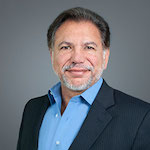Adult Stem Cell Therapy & Platelet Rich Plasma
Arthroscopic Labral Repair and Instability Repair
Labral tears are a common cause of shoulder problems. The labrum is the cartilage in the shoulder joint that protects the two bones that make up the joint. Many people can confuse pain from labral tears with the kind of chronic pain caused by arthritis. Arthritis of the shoulder is caused by a wearing out of the articular, or white cartilage on the ends of the bones. The labrum is a much stiffer and more fibrous kind of cartilage, and is only found around the glenohumeral joint.
There are three kinds of common labral tears; each is different from the others in terms of location and severity.
-
A complete labral tear is one in which the labrum is completely torn away from the bone, and is usually associated with an acute injury in which the shoulder has been dislocated or subluxated.
-
An internal labral tear is one in which the labrum itself becomes frayed, and is often a more chronic injury. Often, this kind of tear does not present any related symptoms initially.
-
One of the most common labral tears occurs where the biceps tendon attaches to the top of the shoulder socket, where it merges with the labrum. This kind of injury is called the Superior Labrum Anterior/Posterior (SLAP) lesion, and can be mild or severe. Fortunately, there is a quick and minimally invasive procedure for repairing a SLAP lesion.
Dr. William F. Bennett has been performing these kinds of repairs for 20 years. He has not only successfully repaired numerous labral tears, shoulder subluxations, and dislocations arthroscopically, but he has also developed innovative techniques to help stabilize the biceps tendon in its groove as it enters the shoulder. Not only has Dr. Bennett helped many patients with these techniques, he has also published his research extensively in peer-reviewed journals. His work has led to techniques that were once pioneering to be considered the gold standard of care for these kinds of injuries.
Dr. Bennett published a research paper that discussed this technique in Arthroscopy, one of the leading peer-reviewed journals in the field, in 2004. In the paper, he described research he’d conducted since 1995 on the technique. 18 patients who had lesions affecting the medial and lateral walls of the bicipital sheath were included in the study. Dr. Bennett treated these patients using arthroscopic repair and continued to follow up with them for two years each in order to determine if the technique helped reduce the likelihood of biceps rupture following surgery. Prior to this study, high rates of biceps rupture were noted by other orthopedic surgeons who used similar arthroscopic techniques; Dr. Bennett intended to determine if his methods could reduce these levels.
He found that only one of the 18 patients experienced biceps rupture following arthroscopic repair. This was a reduction to just 6% of patients. “This arthroscopic technique is technically feasible and can alleviate the symptoms of biceps tendon inflammation and/or subluxation in the majority of cases in this cohort,” wrote Dr. Bennett. Since 2004, he has continued to successfully treat patients with this method. If you or someone you know is suffering from torn tendons or cartilage in their shoulder or other joints, contact Dr. Bennett’s office today to find out how he can help.






